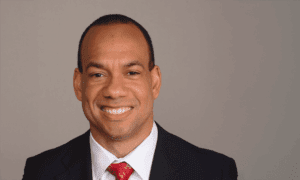In these times of national polarization and fear over potential economic decline, a reminder from the agricultural days of the South might be worth resurrecting: “Don’t eat the seed corn.”
Ears of corn held back at each harvest were stored for planting the following spring (pronounced, “Sprang,” remember??) Any family who ate its seed corn pretty much did so under the direst of economic circumstances, or else was totally and completely feckless, on par with folks so short-sighted they ripped weatherboarding off their homes for the purpose of kindling fires.
The single example your compiler can think of to the contrary – besides the Gospel story of the widow’s mite – involved tremendous sacrifice for the community good, and did not so much involve eating the seed corn as using seed money for purposes other than buying seed. In late 1910, as construction began on the beautiful Chestlehurst brick Methodist Episcopal Church, South building in Brooks, Georgia, which featured a crenellated parapet and stained glass windows with lancet-arched frames, a life-long parishioner, Mr. W. R. A. Hardy, then in his early fifties, and his wife, the former Beulah Coggin, were moved to donate their seed money for the Spring 1911 planting season to buy all nails and metal bracing needed for the building’s timber frame. This was neither fecklessness on the Hardys’ part nor dire economic circumstance; rather, it was sacrificial giving at its finest, trusting in the Lord’s provision and reward for faithfulness.
Furthermore, it all turned out beautifully: several Hardy descendants remain pillars of the same congregation today, although it moved to a new location in Brooks in 1997. The beautiful 1911 structure is now called, “Brooks Chapel.” Beautifully restored, it is a popular event venue owned and maintained by the town government, and the Hardys’ nails and bracing still hold one hundred fourteen years later. (That reminds your compiler of a saying he was reared with, one which his late mother embroidered in sampler form for him some years back. It states, “Use it up. Wear it out. Make it do or do without.” Anyone who has seen your compiler’s 2014 model automobile knows he subscribes rather literally to that mantra.)
Generally speaking, “Don’t eat the seed corn” means not to live beyond one’s means, not to exhaust one’s savings, and to economize when one can. It does not mean to be as tight as Dick’s hatband, or to be so stingy that folks will snicker that you still have your fifth-grade milk money. It just means be conservative with your spending – one can have a whale of a good time and eat plenty of corn without eating that set aside for seed.
Your complier’s great-aunt and longtime next-door-neighbor, Ruth Crawford, who died in 2010 at age ninety-two, put it a bit differently. “I’ve been bent several times in my life,” she would muse on occasion as both her age and frankness increased, “but I’ve never been broke. Daddy took me to see Miss Fannie Westmoreland at the bank in Griffin when I was twelve, and I opened my first passbook account. I’ve had at least some amount in savings ever since, so I’ve truly never been broke.” This saving attitude and practice since youth, as well as a lifelong aversion to “eating the seed corn,” enabled her to say this in her old age, which was spent in economic comfort.
May we younger folks, who so love keeping up with the Joneses (and everyone else), be so wise.












Leave a Comment
You must be logged in to post a comment.